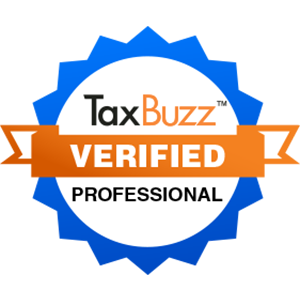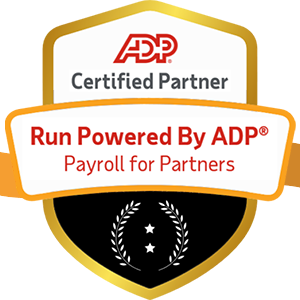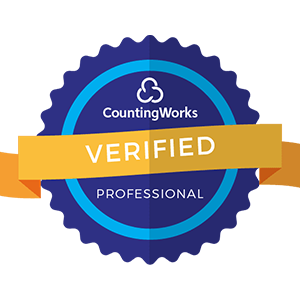
For decades, companies have offered Employee Assistance Programs (EAPs) as a way to support their workers' mental health and wellbeing. But in recent years, the landscape of employee support has shifted dramatically. The global pandemic, a greater focus on diversity, equity and inclusion, and the rise of remote and hybrid work have all created new challenges—and opportunities—for how organizations care for their people.
As a result, many companies are rethinking their approach to EAPs. Call it EAPs 3.0: a more holistic, accessible, and culturally competent vision for employee support. So what exactly does this new paradigm look like? And how can your organization modernize its EAP to better meet the needs of today's workforce? Here's what you need to know.

First, let's examine where traditional EAPs often miss the mark. While certainly well-intentioned, many of these programs were designed for a different era and a different type of worker. The key limitations include:
EAPs are chronically underutilized, with only a small percentage of employees taking advantage of them each year. Services are often difficult to access, requiring phone calls, in-person appointments, or complex approval processes. This creates particular barriers for younger workers who prefer digital communication and 24/7 on-demand support.
Traditional EAPs tend to offer a standard set of services—short-term counseling, legal advice, and financial consultation. But today's diverse workforce has diverse needs. An employee struggling with infertility, a worker coping with racism, or a manager leading a remote team for the first time all require specialized support that cookie-cutter programs often can't provide.
EAPs are generally designed as a safety net—a resource employees can turn to when they're already in crisis. But this reactive approach does little to actually prevent issues from occurring in the first place. It's like offering a life jacket only after someone is already drowning.
In an increasingly diverse workforce, it's critical that employee support services are inclusive and culturally responsive. But many EAPs are staffed by counselors and providers who lack training in issues like racial trauma, LGBTQ+ identity, or neurodiversity. This creates an environment where employees from marginalized groups don't feel fully seen, heard, or supported.
The bottom line: Traditional EAPs are built on outdated assumptions about how, when, and why people seek help. It's time for a fundamental reimagining.
By understanding these limitations, organizations can envision a new and improved approach to employee support—one that is more accessible, personalized, proactive, and inclusive. Here are the key elements of a modernized EAP:
To improve accessibility and engagement, forward-thinking organizations are embracing digital-first EAPs. This means offering support services through apps, chatbots, online portals, and other digital channels that employees are already using in their daily lives.
The Digital Advantage
24/7 Access: Support available anytime, anywhere, without scheduling appointments or waiting for business hours.
Greater Privacy: Anonymous and confidential access that reduces stigma and increases comfort levels.
User Control: Employees can seek help on their own terms, at their own pace.
Generational Appeal: Particularly attractive to younger workers who prefer texting or instant messaging to phone conversations.
Digital EAP Services Include
Important balance: Digital delivery shouldn't completely replace human connection. The most effective EAPs take an omnichannel approach, combining high-tech solutions with high-touch support through in-person counseling, on-site wellness workshops, and manager training.
A standardized approach to employee support simply doesn't work in today's diverse workforce. Modern EAPs need to offer a wide range of services to address the unique needs of different employee populations.
Specialized Support Offerings
Working Parents: Child care resources, parenting coaching, and return-to-work programs.
LGBTQ+ Employees: Affirming counseling and resources on topics like coming out at work, navigating discrimination, and transitioning.
BIPOC Workforce: Culturally responsive mental health services with providers who understand racial trauma, microaggressions, and imposter syndrome.
Disability and Neurodivergence: Accommodations and support for employees with disabilities, chronic health conditions, or neurodivergent needs.
Gender-Specific Programming: Men's mental health groups, women's leadership development, and gender-affirming support.
Life Stage Resources: Tailored services for new graduates, mid-career professionals, and those nearing retirement.
Data-Driven Personalization
Advanced EAPs are leveraging technology for true individualization:
When support feels relevant and personalized, employees are more likely to use it—and reap the benefits.
The most forward-thinking organizations are shifting from reactive crisis intervention to a proactive model focused on prevention and skill-building. The philosophy is simple: give employees tools to manage stress, build resilience, and maintain their mental health before issues arise.
Proactive Prevention Strategies
Resilience Training Programs: Teaching strategies for managing stress, navigating change, and cultivating growth mindsets.
Mindfulness and Meditation Workshops: Developing greater focus, clarity, and emotional regulation.
Stress Management Resources: Online assessments, relaxation techniques, and time management strategies.
Mental Health Literacy Campaigns: Reducing stigma and encouraging early help-seeking behavior.
Manager Training: Creating mentally healthy workplace cultures, spotting signs of distress, and having supportive conversations.
Peer Support Programs: Connecting employees with shared experiences for mutual aid and open dialogue.
Cultural Integration
The key is weaving these proactive elements into the organizational fabric, making mental health support a normal, integral part of the employee experience. Instead of being seen as crisis services for "broken" people, EAPs become positive, proactive tools for building thriving, resilient workforces.
The business impact: Organizations investing in prevention and skill-building create cultures of wellbeing that drive engagement, productivity, and retention—a win-win for individuals and bottom lines.
For an EAP to be truly effective, it must be inclusive and culturally competent. This means providing support that is respectful, responsive, and relevant to the diverse needs and experiences of all employees.
Building Cultural Competence
Diverse Provider Networks: Recruiting and training clinicians who reflect the identities and experiences of the workforce.
Culturally Specific Services: Support groups for BIPOC employees, LGBTQ+ affirming counseling, or accommodations for religious practices.
Multilingual Support: Services and materials available in languages other than English.
Social Justice Integration: Incorporating anti-racism frameworks that acknowledge the impact of systemic oppression on mental health.
ERG Partnerships: Collaborating with employee resource groups to ensure EAP services align with different identity groups' needs.
Continuous Improvement: Regular diversity audits and employee feedback to identify areas for enhancement.
When EAPs take an inclusive, culturally competent approach, they create support systems that truly work for everyone. Employees are more likely to seek help when they feel seen, heard, and valued.
Modernizing an EAP requires significant investment of time, resources, and organizational commitment. But for companies dedicated to supporting employee wellbeing, it's an investment that delivers substantial returns.

The evolution of employee support continues accelerating. As new technologies emerge and societal norms shift, EAPs must keep adapting to meet ever-changing workforce needs.
Virtual and Augmented Reality: Immersive, experiential mental health support including virtual therapy sessions, guided meditations, and gamified stress management tools.
Wearables and Biometric Data: Heart rate, sleep patterns, and stress level tracking to personalize EAP services and predict mental health crises before they occur.
Advanced AI and Chatbots: More sophisticated artificial intelligence for triaging employee needs and providing personalized recommendations while maintaining essential human connections.
Social Impact Integration: EAPs incorporating corporate social responsibility programs, promoting volunteering and community service as mental health and wellbeing boosters.
Extended Network Support: Expanding beyond employees to support families and communities, recognizing that individual wellbeing interconnects with broader social health.
The future of employee support extends far beyond traditional workplace boundaries. We're moving toward comprehensive support ecosystems that recognize the whole person—their family situation, community connections, and life circumstances—in providing truly effective assistance.
The world of work is changing rapidly, and employee support must evolve accordingly. By embracing a more modern, holistic, and inclusive approach to EAPs, organizations can create genuinely resilient workforces equipped to thrive in the face of any challenge.
Key Takeaways:
The bottom line: The future of employee support is bright, innovative, and inclusive. Organizations that invest in comprehensive, culturally competent, and proactive employee assistance programs will not only support their people's wellbeing but also drive business success through enhanced engagement, productivity, and retention.
As Mahatma Gandhi reminds us: "The future depends on what we do in the present." The time to modernize your employee support systems is now. Take action today to build the EAPs of tomorrow—ones that truly empower every individual to reach their full potential and thrive.
The question isn't whether you can afford to invest in modern employee support—it's whether you can afford not to.


